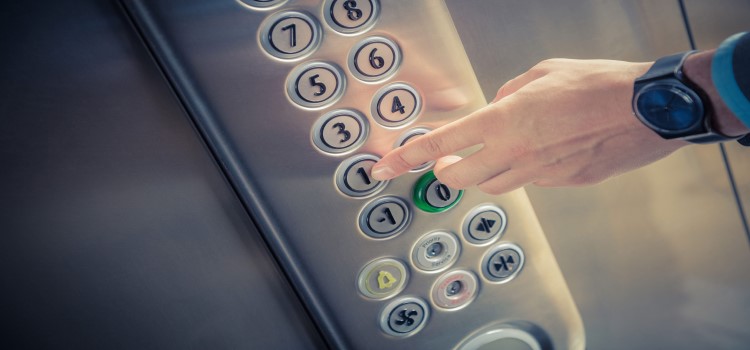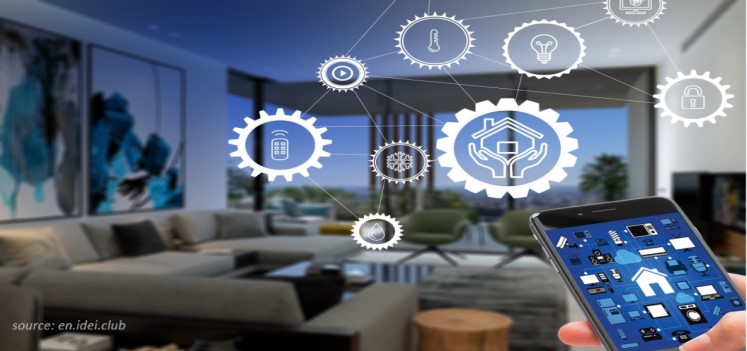
Home Automation Market by Connection Type (Wired and Wireless), by Management (On-Premise and Cloud Based), by System Type (Luxury Home Automation, Mainstream Home Automation, Managed Home Automation, and DIY Home Automation), by Fitment Outlook (New Construction and Retrofit), and by Application (Lighting Control, Security & Access, HVAC Control, Entertainment Control & Others)– Global Opportunity Analysis and Industry Forecast, 2024–2030
Industry: Construction & Manufacturing | Publish Date: 29-Jan-2024 | No of Pages: 409 | No. of Tables: 301 | No. of Figures: 266 | Format: PDF | Report Code : N/A
Market Overview
The global Home Automation Market size was valued at USD 103.34 billion in 2023 and is predicted to reach USD 210.53 billion by 2030, with a CAGR of 10.7% from 2024 to 2030. The home automation market refers to the commercial sector focused on the development, production, and sale of home automation systems.
Home automation systems allow for the automated or remote control of various home devices and functions such as lighting, heating, air conditioning, security systems, and entertainment devices. This market encompasses a wide range of products and services, including smart home devices, software applications, and platforms that enable the integration and management of different home automation systems.
The Growing Penetration of IoT Devices Boosts the Home Automation Market
The growing integration of IoT (Internet of Things) devices is a pivotal factor driving the growth of the Home Automation Market. According to the estimates of the Institute of Electrical and Electronics Engineers (IEEE), 50 billion IoT devices will be in use globally by 2030. This technological advancement has brought about a revolution in how homes are managed and controlled.
IoT enables a seamless connection between various home devices, such as lighting systems, heating and cooling units, security cameras, and entertainment systems, allowing them to communicate with each other. This interconnectedness not only offers homeowners enhanced control over their home environments but also allows for management from remote locations, adding a significant layer of convenience and flexibility.
Moreover, a key benefit of IoT in home automation is the increased efficiency and potential for energy savings. Smart devices can learn a homeowner's habits and preferences, adjusting settings to optimize energy usage. Homeowners have the flexibility to start with basic setups and gradually expand by adding more devices and functionalities. This scalability appeals to a broad range of consumers, each with unique needs and budgets.
Rising Disposable Income Worldwide is Fueling the Market Growth
This surge in disposable incomes is transforming home automation from a luxury to a necessity for many households. As individuals have more resources at their disposal, there's a growing inclination towards enhancing living spaces with smart, efficient, and convenient home technologies. The escalation of consumer spending capacity is evidenced by the recent data from the U.S. Bureau of Economic Analysis, is a pivotal factor driving the growth of the global home automation market.
The marked increase to 15461.38 USD billion in the third quarter of 2023, rising from 15343.55 USD billion in the previous quarter, highlights a significant upward trend in consumer financial power. This trend, consistently ascending from an average of 6680.08 USD Billion since 1950 and reaching an all-time high in 2023, mirrors the expanding investment in smart home technologies.
Security and Data Privacy Concerns Restrain the Market Growth
The growth of the home automation market faces a significant hurdle due to security concerns associated with home automation systems. Smart home devices such as thermostats, cameras, and door locks are susceptible to hacking, which can compromise the privacy and safety of residents.
This vulnerability often stems from weak or easily guessable passwords and inadequate Wi-Fi network security. Hackers exploit these weaknesses to gain unauthorized access, potentially controlling devices or accessing sensitive data. To mitigate these risks, home automation owners must prioritize robust password practices, regularly update device firmware, and secure their home networks to reduce the threat of cyber-attacks.
Introduction of Blockchain Technology in Home Automation Devices to Enhance Data Safety
The introduction of blockchain technology in home automation devices is emerging as a significant factor creating ample opportunities for the growth of the home automation market. Blockchain, renowned for its robust security features, offers a decentralized approach to data management and security, making it an ideal solution for enhancing data safety in smart home devices.
By ensuring data integrity and preventing unauthorized access, blockchain technology can increase consumer trust in smart home devices. This heightened sense of security is likely to encourage more people to adopt home automation technologies, thereby expanding the market. Moreover, blockchain enables smart contracts, which can automate device-to-device interactions securely and efficiently. This can enhance the functionality of home automation systems, making them more user-friendly and versatile.
North America dominates the home automation market
The growth of the home automation market in North America is being propelled by the rapid pace of digitalization. This digital transformation is characterized by increased connectivity and the widespread adoption of smart devices in residential settings. With the ubiquity of high-speed internet and the widespread use of smartphones and tablets, controlling and monitoring home automation systems has become more accessible and user-friendly. This ease of use and increased connectivity have significantly boosted the market's growth, making smart home technologies more appealing to a broader demographic.
Additionally, there is a pronounced focus on energy efficiency in both the U.S. and Canada, aligning well with the capabilities of home automation systems. This focus on energy efficiency extends beyond consumer preferences; it is also reflected in government policies and initiatives aimed at reducing energy consumption and minimizing the carbon footprint.
Furthermore, the investment in energy efficiency in North America has seen significant growth, with an estimated 15% increase from 2015 to 2022, according to the U.S. Energy Efficient Impact Report. This increase in investment levels indicates a strong commitment from both the public and private sectors to promote technologies that contribute to energy savings. This financial backing not only underscores the importance of energy efficiency but also fosters the development and wider adoption of home automation technologies. These elements are not only driving the current growth but are also shaping the future direction of the home automation industry in the region.
Asia-Pacific is Expected to Show Steady Growth in the Home Automation Market
Asia-Pacific is expected to witness an increased demand for home automation in the coming years, driven by factors such as the high smartphone penetration rates in countries including China and India, providing a solid foundation for the widespread adoption of home automation devices. For instance, in 2022, nearly 72% of the Chinese population owned smartphones. It is also projected that around 83% of people in China will be using smartphones by 2027.
The total number of smartphone users in 2022 surpassed one billion. With most of the population owning smartphones, consumers can easily control and manage their home automation devices through dedicated mobile apps. This accessibility and familiarity with smartphone interfaces make home automation more appealing and user-friendly than before, driving its popularity among Chinese consumers.
Also, the presence of smart electronics manufacturers such as Samsung and LG is propelling the growth of the market. They are adopting various strategies in the region, including product launches. For instance, in January 2023, Samsung launched SmartThings Station, a new addition to its home automation ecosystem.
This innovative product aims to enhance the home automation experience by centralizing control and connectivity. It is a hub for various smart devices, allowing users to manage and monitor their home automation ecosystem seamlessly. This launch reflects Samsung's ongoing commitment to advancing the home automation market by providing integrated and user-friendly solutions.
Competitive Landscape
Several market players operating in the home automation industry include Honeywell International Inc., ABB Ltd, Johnson Controls International, Crestron Electronics, Inc., United Technologies Corporation, Schneider Electric S.E., Siemens AG, Lutron Electronics Co. Inc., Ingersoll-Rand plc, and Legrand SA. These market players are adopting product launch strategies across various regions to maintain dominance in the home automation market.
For instance, in June 2023, ABB revealed its acquisition of Eve Systems GmbH, a prominent Munich-based provider of smart home products with a presence in both Europe and the United States. This strategic move is set to fast-track ABB's commitment to delivering homes and buildings that are not only safe and intelligent but also energy-efficient.
Moreover, in April 2023, Resideo Technologies, a spin-off of Honeywell, launched its Honeywell Home T10+ Smart Thermostat Kits, which provide comprehensive control over indoor air quality and comfort. The T10+ Smart Thermostat Kit with RedLINK 3.0 can be installed quickly, and connected directly to the home's WiFi network. It is upgraded to multi-stage or control indoor air quality accessories such as humidifiers, dehumidifiers, and air cleaners.
Home Automation Market Key Segments
By Connection Type
-
Wired
-
Wireless
By Management
-
On-Premise
-
Cloud-Based
By System Type
-
Luxury Home Automation
-
Mainstream Home Automation
-
Managed Home Automation
-
DIY Home Automation
By Fitment Outlook
-
New Construction
-
Retrofit
By Application
-
Lighting Control
-
Security & Access
-
HVAC Control
-
Entertainment Control
-
Others
By Region
-
North America
-
The U.S.
-
Canada
-
Mexico
-
-
Europe
-
The U.K.
-
Germany
-
France
-
Italy
-
Spain
-
Denmark
-
Netherlands
-
Finland
-
Sweden
-
Norway
-
Russia
-
Rest of Europe
-
-
Asia-Pacific
-
China
-
Japan
-
India
-
South Korea
-
Australia
-
Indonesia
-
Singapore
-
Taiwan
-
Thailand
-
Rest of Asia-Pacific
-
-
Rest of the World (RoW)
-
Latin America
-
Middle East
-
Africa
-
REPORT SCOPE AND SEGMENTATION:
|
Parameters |
Details |
|
Market Size in 2023 |
USD 103.34 Billion |
|
Revenue Forecast in 2030 |
USD 210.53 Billion |
|
Growth Rate |
CAGR of 10.7% from 2024 to 2030 |
|
Analysis Period |
2023–2030 |
|
Base Year Considered |
2023 |
|
Forecast Period |
2024–2030 |
|
Market Size Estimation |
Billion (USD) |
|
Growth Factors |
|
|
Countries Covered |
28 |
|
Companies Profiled |
10 |
|
Market Share |
Available for 10 companies |
|
Customization Scope |
Free customization (equivalent to up to 80 working hours of analysts) after purchase. Addition or alteration to country, regional, and segment scope. |
|
Pricing and Purchase Options |
Avail customized purchase options to meet your exact research needs. |
Key Market Players:
-
Honeywell International Inc.
-
ABB Ltd.
-
Johnson Controls International
-
Crestron Electronics Inc.
-
United Technologies Corporation
-
Schneider Electric S.E.
-
Siemens AG
-
Lutron Electronics Co. Inc.
-
Ingersoll-Rand plc
-
Legrand SA.




 Speak to Our Analyst
Speak to Our Analyst


































